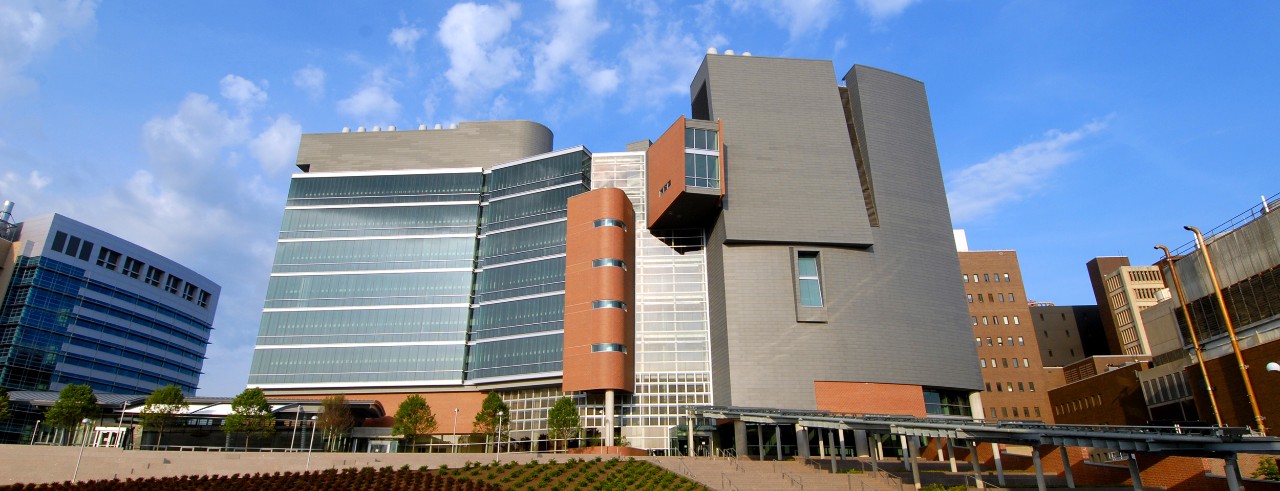
College of Medicine response to racial injustice
Recent deaths are latest examples of stark racial injustices that have plagued our country’s history
The following message to the faculty, students and staff of the University of Cincinnati College of Medicine is from Andrew T. Filak Jr., MD, senior vice president for Health Affairs and Christian R. Holmes Professor and dean; Mia Mallory, MD, MEd, associate dean, Office of Diversity, Equity and Inclusion; and Lisa Johnson, MD, assistant dean, Office of Diversity, Equity and Inclusion.
The news of the deaths of George Floyd, Breonna Taylor and Ahmaud Arbery have elicited some of the deepest forms of anguish, fear, sadness and rage in recent memory. Yet, we know these deaths are only recent examples of the stark racial injustices that have plagued our country’s history.
These violent acts come at a time when our world has already been profoundly disrupted by COVID-19, and many of those most affected are people of color, particularly African Americans – the very same people in communities already burdened by a history of prejudice, poverty and especially racism in the Greater Cincinnati community and beyond.
We recognize both the direct and indirect impact these events have on the members of our community. We recognize that most of us are experiencing distress and fear for ourselves, our friends, our children and our families. We want to acknowledge the pain and grief that we, as a community, are all experiencing.
As a medical community working toward providing and achieving optimal health for all, it is important to recognize that these deaths were preventable and enabled by a deeply rooted system of racial inequity, oppression and discrimination in the United States. Therefore, we urge you to use this moment to strengthen your commitment to achieving racial equity rather than fall into despair. It is important that we join the call across the country to demand justice for George Floyd, Breonna Taylor, Ahmaud Arbery and countless other victims of police and racial violence in solidarity with the Black community.
We ardently amplify President Neville Pinto’s statements this morning that the time to act is now and we must hold ourselves and each other accountable for lasting change. Additionally, we echo the sentiments of David J. Skorton, MD, president and CEO of the Association of American Medical Colleges, that as healers and educators of the next generation of physicians and scientists, we must take bold action in partnership with the communities we serve.
We encourage all members of the College of Medicine community to learn meaningful ways to show solidarity and stand against racism and hate in all its forms by using some of the resources below. We also ask that you recognize the overwhelming and disproportionate psychological toll these events continue to have on our Black students, staff and faculty, and ask that you practice compassion and radical empathy to our colleagues and students experiencing trauma in the aftermath of these tragedies. We also encourage those experiencing trauma to practice self-care by connecting with family, friends and other community support people or using some of the resources provided below. As always, please know that you can reach out to the Office of Diversity, Equity and Inclusion.
Resources for Engaging in Anti-Racism Work and Practicing Solidarity
- Resources for Engaging in Anti-Racism Work
- We are Living in a Racist Pandemic
- Your Black Colleagues May Look Like They’re Okay – Chances are They’re Not
- Affirming Black Lives Without Inducing Trauma
- If You See Something, Do Something Instead of Calling the Cops
- What to Do Instead of Calling the Police
Resources for Black, Indigenous and People of Color (BIPOC) to Engage in Self-Care
- Surviving & Resisting Hate: A Toolkit for People of Color
- Self-Care Tips for Black People Who Are Struggling with this Very Painful Week
- Self-Care for People of Color after Psychological Trauma
Ways to Support Current Developments in Minneapolis:
We must always uphold the mission and values of our college and work together to eradicate racism and promote a healthy, safe and just community and society for all. This moment is our call to action. It will be challenging to directly confront issues like racism in our community, but we must.
Finally, let us remember the words of Sen. Robert F. Kennedy: “It is from numberless diverse acts of courage and belief that human history is shaped. Each time a man stands up for an ideal, or acts to improve the lot of others, or strikes out against injustice, he sends forth a tiny ripple of hope, and crossing each other from a million different centers of energy and daring, those ripples build a current that can sweep down the mightiest walls of oppression and resistance.”
Tags
Related Stories
World class: Alumni travel program connects Bearcats on global scale
January 7, 2026
Most people have a natural curiosity to see the world. Meanwhile, most Bearcats enjoy being around other Bearcats. Alumni can check both boxes through the UC Alumni Association’s travel program, which offers about half a dozen excursions each year to fascinating places around the globe.
UC launches Bearcat Affordability Grant
January 7, 2026
The University of Cincinnati is making college more attainable for students across Ohio with the creation of the Bearcat Affordability Grant. The new grant will provide a pathway to tuition-free college for students of families who make less than $75,000 per year. Beginning in fall 2026, the Bearcat Affordability Grant will cover the remaining cost of tuition for Ohio residents who are Pell eligible.
Chris Higgins named UC Foundation Vice President for Development, Academic Health Enterprise
January 6, 2026
The University of Cincinnati Foundation is pleased to welcome Chris Higgins as the new Vice President for Development, Academic Health Enterprise.
